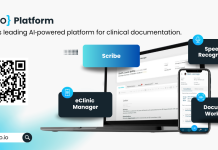Discover insights on public sector procurement for IT buyers: Navigating challenges, seizing opportunities, and embracing innovative changes for enhanced efficiency and value
Procurement of IT for public sector innovation in the UK currently operates under a long-established remit aimed at ensuring transparency, fairness, and value for money in projects funded by the public purse.
Last outlined in 2006 by the Public Contracts Regulations Act, this process establishes frameworks comprising of pre-qualified and vetted suppliers who adhere to detailed procedures and regulations. It was believed that using this ready pool of suppliers would foster efficiencies, innovation, and value while mitigating risk, as qualifying suppliers have already navigated through six rigorous procurement stages.
However, dissent regarding the effectiveness of these public sector frameworks has grown louder, fuelled by numerous high-profile technology failures, prompting central government to question the quality of the innovation delivered and address deep-rooted concerns about time to delivery. (1)
The current public sector procurement landscape
What stands out in the process are the significant barriers to entry for smaller companies, hindering their ability to offer innovative solutions in the public sector frameworks. Procurement practices have favoured large, established IT service organisations capable of meeting the high points bar and detailed demands of framework requests. These entities typically include Global System Integrators (GSIs), major consultancy firms, prominent vendors, and large managed IT service providers (MSPs). Although the original intent of the frameworks wasn’t to create a cartel of larger tech suppliers, the criteria used by public sector decision-makers, such as expertise, capabilities, past performance, pricing, and suitability, heavily favour these larger suppliers with proven track records of delivery. Consequently, the high barriers to entry are associated with higher-cost delivery structures. Established providers can maintain their positions within the framework for extended periods, limiting access and establishing a monopoly on supply for smaller, more agile delivery partners who struggle to demonstrate comparable experience based on the same criteria.
The 2023 Procurement Act: A shift towards innovation
As demands for enhanced innovation with fewer budgets intensify, the clamor for change has grown louder. In response, the 2023 Procurement Act(2), recently ratified by Parliament, empowers procurement leaders to seek and secure innovative solutions that not only meet but surpass innovation requirements, streamline bureaucracy, and elevate the quality of public services.
With the Act scheduled to take full effect in October 2024, procurement teams are instructed to embrace a broader array of tools, facilitating the selection of newer, more diverse, innovative solution providers focused on delivering specific outcomes. Procurement managers and IT leads will receive training and encouragement to collaborate with smaller tech businesses (SMEs) that can demonstrate superior digital outcomes. In fact, these SMEs will have the opportunity to form bidding consortiums, allowing them to collectively showcase their unique innovations and tailor their bids to specific parts without the need to present extensive portfolios of past installations.
Additionally, public sector departments will be required to forward-publish their forthcoming pipeline of projects*, enabling SMEs to better strategise, prepare, and time their responses.
Streamlining the public sector procurement processes
With the implementation of these new guidelines, it’s hoped that the speed of deployment will be dramatically cut. Currently, it can take years to acquire and implement much-needed IT services and solutions, resulting in tech gains becoming outdated before citizens can reap the benefits.
The process will be streamlined to prevent scope creep while addressing risk aversion without compromising risk management strategies. Agile procurement policies will be promoted, enabling the swift testing of innovative solutions through pilot projects before committing to large-scale projects. Additionally, there will be increased collaboration between the private and public sectors, fostering innovation through joint ventures and leveraging partnership outsourcing and concessions.
Collaboration for innovation and ensuring value for money
Optimisation and achieving value for money remain key objectives. To ensure greater consistency, public bodies need to embark on a continuous spending monitoring program, as unchecked spending can quickly escalate—excessive, spiraling cloud costs frequently cited as examples. Here, under single-source cloud vendor arrangements, charges tend to soar over time, influenced by unpredictable cloud egress fees or inaccurate projections of cloud consumption.
Additionally, market conditions must considered, as shown by public authorities who successfully and widely embraced virtualisation to reduce hardware expenses. Here, the recent acquisition of VMware by Broadcom has raised concerns about escalating future costs for virtual environments, with new high-cost licensing models, reductions in public sector discounts, and the transition to prohibitively expensive per-core licensing schemes. (3)
Sustainable IT innovation is imperative for ongoing savings through reutilisation. Most public sector organisations wish to adopt sustainable IT lifecycles, often adhering to ISO 14001 standards to address energy efficiencies, emissions reduction, resource consolidation, and waste recycling. In maintaining efforts, procurement teams in the public sector can reduce their environmental footprints while advocating social, corporate, and environmental responsibilities to their constituents -reducing overhead costs and capital expenditures.
Lastly, public sector organisations must effectively adopt AI usage to fully leverage its potential for enhancing their infrastructures, recognising AI’s transformative capabilities, and developing a strategy that aligns with organisational objectives, employing machine learning and data analytics to enhance IT outcomes. However, AI implementation requires vigilant monitoring to mitigate risks such as bias, lack of transparency, fairness, and privacy concerns.
Harnessing the power of AI
The anticipated changes in procurement are truly revolutionary, requiring fresh mindsets, new and updated procedures, innovative funding models, collaborative efforts, and enhanced skill sets in specific areas like AI. Public sector infrastructure leads must promptly adapt to these changes and, in doing so, forge partnerships with reputable third-party organisations that possess a thorough understanding of the dynamics behind these monumental shifts.
*( with a spend of over £100 million and with project values of over £2 million)
- UK public sector projects under pressure to do more for less (ft.com) Feb 23
- Transforming Public Procurement – Our innovation ambition (publishing.service.gov.uk)
- Education sector facing huge VMware cost increases after Broadcom ends discounts | Computer Weekly
This piece was written and provided by Darren Ellis; Regional Vice President, Sales, Park Place Technologies











